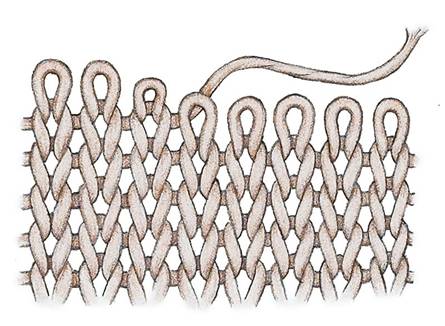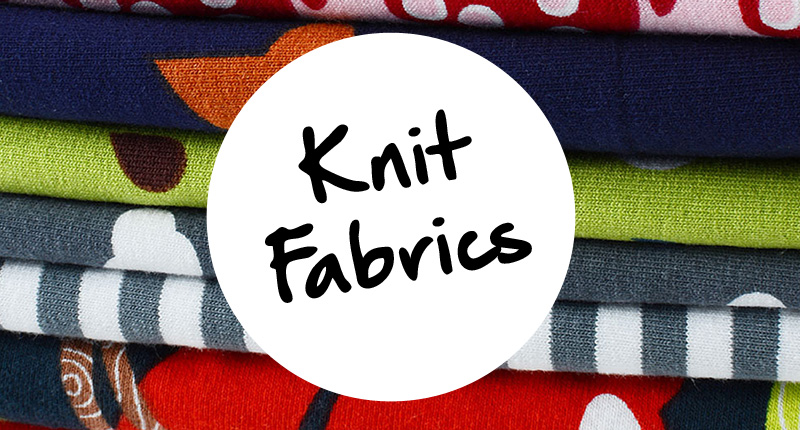Knit fabrics – I think everyone absolutely loves wearing them, but sewing with them…? You either love it or hate it.
Before I researched and learned how to deal with knit fabrics properly, I used to be scared of sewing with this unpredictable fabric. It used to bunch and pucker, the seams did not lie straight, the thread got all tangled up inside the bobbin housing, and the stitching broke when I tried the garment on. (In fact, it still happens if I’m too lazy!)
Sound familiar? You’re not alone! I’ll be writing a few posts on this topic, as it’s both a widely discussed and avoided one.
What Are Knit Fabrics?

It is characterised by that fact that it’s “knitted” by interlocking loops of threads. The picture to the left explains it well. Knit fabrics are made from one continuous piece of thread, and therefore doesn’t come undone as easily as a woven fabric. This also gives it its natural stretchiness.

It’s soft, and can be used for a variety of projects. You also get various types of knit, which I’ll explain in more detail below.
In contrast, woven fabrics are stiff and non-stretchy because they are made by weaving the threads length- and crosswise. Looking at the picture to the right, you can see how it is woven together.
It’s very obvious that it’s not one continuous length of thread. Rather, it’s individual and separate threads which – when cut, fray easily.
What Types of Knit Fabrics Do You Get?
Now that you know what knit fabrics are, you can easily identify it. It’s soft and stretchy. It can be thin or thick. Think t-shirts, leggings, fleeces, exercise wear etc. Below is a list of the most common types of knit fabrics:
- Cotton jersey – this comes in a variety of weights, and is most commonly used for t-shirts.
- Ribbing – this is easily identifiable due to the ribs on it. It’s mostly used for necklines, and arm/leg cuffs.
- Cotton Lycra Blends – these are similar to cotton jersey, but because of the addition of the spandex, it has a “recoverable” stretch which basically means it doesn’t stretch out completely and returns to its original shape.
- Cotton interlock knits – these are heavier types of knits and because of that, it is a lot easier to sew with and therefore great for newbies.
- Fleece – these are soft and cosy and although they are knits, they don’t really stretch as much and is therefore a lot easier to sew.
Obviously, there are quite a lot of other knits out there that I haven’t mentioned above, but I think these are the most common. Currently, I feel and stretch a fabric to see if I like it, but often I have no idea what it is called.
So, when shopping for knits, be mindful of what your pattern requires and what your abilities are as some knits are more difficult to work with than others.
Next week I’ll give you some tips and tricks to work with knits. Once you get over your initial fear, I promise a whole new world of sewing will open up for you!




